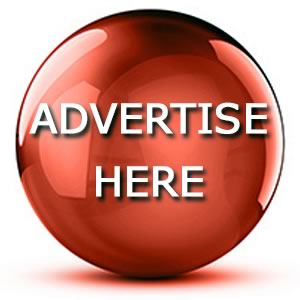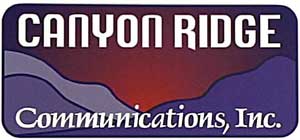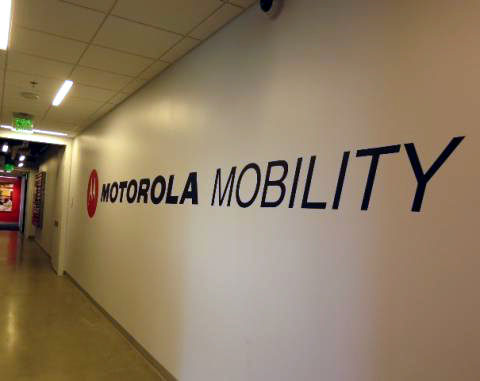Selected portions of the BloostonLaw Telecom Update, and/or the BloostonLaw Private Users Update — newsletters from the Law Offices of Blooston, Mordkofsky, Dickens, Duffy & Prendergast, LLP are reproduced in this section with the firm's permission. 
| BloostonLaw Telecom Update | Vol. 17, No. 45 | November 12, 2014 |

REMINDER: SPECIAL ACCESS DATA COLLECTION RESPONSES DUE DEC. 15All entities that were required to file FCC Form 477 to report the provision of "broadband connections to end user locations" for Year 2013 are required to respond to the FCC's special access data collection, due December 15, 2014. The sections of the data collection that an entity must complete are determined by whether the entity meets the definition of Provider and/or Purchaser of special access services or provides Best Efforts Business Broadband Internet Access Services as defined in the data collection. Even if an entity does not meet either definition, it must still complete a certification to that effect. Headlines 
President Obama Urges FCC to Adopt Strict Rules on Net Neutrality; FCC Chair Asks for More TimeOn Monday, November 10, President Obama released an official statement supporting the adoption of strict Net Neutrality rules and urging the FCC to adopt full Title II regulation of the Internet. As quoted directly from the statement, the President supports: - No blocking. “If a consumer requests access to a website or service, and the content is legal, your ISP should not be permitted to block it. That way, every player — not just those commercially affiliated with an ISP — gets a fair shot at your business.
- No throttling. Nor should ISPs be able to intentionally slow down some content or speed up others — through a process often called “throttling” — based on the type of service or your ISP’s preferences.
- Increased transparency. The connection between consumers and ISPs — the so-called “last mile” — is not the only place some sites might get special treatment. So, I am also asking the FCC to make full use of the transparency authorities the court recently upheld, and if necessary to apply net neutrality rules to points of interconnection between the ISP and the rest of the Internet.
- No paid prioritization. Simply put: No service should be stuck in a “slow lane” because it does not pay a fee. That kind of gate-keeping would undermine the level playing field essential to the Internet’s growth. So, as I have before, I am asking for an explicit ban on paid prioritization and any other restriction that has a similar effect.”
President Obama also firmly supports the reclassification of broadband service as a Title II service under the Communications Act, though he also supported forbearance from rate regulation “and other provisions less relevant to broadband services.” He continued, “[t]his is a basic acknowledgment of the services ISPs provide to American homes and businesses, and the straightforward obligations necessary to ensure the network works for everyone — not just one or two companies.” In an official response to the President’s statement, Chairman Wheeler agreed with Obama’s opposition to so-called “Internet fast lanes.” The Chairman also indicated that the FCC would incorporate the President’s statement into the record of the Open Internet proceeding, and will comment on it as the proceeding moves forward. Chairman Wheeler’s statement also emphasized that the FCC would need more time to examine the issues surrounding the Open Internet, though how much time was not specified. While the Internet Association, whose members include providers like Netflix, Twitter, and Google, applauded Obama’s statement, industry giants AT&T, Comcast, and Time Warner Cable have railed against it. FCC Seeks Comment on TracFone Petition for Declaratory Ruling on 911 TaxesOn November 7, the FCC’s Wireline Competition Bureau released a Public Notice seeking comment on a Petition for Declaratory Ruling filed by TracFone Wireless, Inc. (“TracFone”) on October 23, 2014. Comments are due on December 8, and reply comments are due on December 23.
In its petition, TracFone asks the FCC to issue a declaratory ruling, on an emergency basis, “confirming that state laws and regulations that impose 911 taxes and fees on low-income Lifeline customers who receive no-charge (i.e., free) wireless Lifeline service (1) unlawfully reduce the value of the federal Lifeline benefits by imposing a state tax on those benefits … and (2) impeded the ability of Eligible Telecommunications Carriers (“ETCs”) offering no charge Lifeline service to fairly compete in the Lifeline service market.” TracFone also asks the Commission to issue a declaratory ruling “preempting enforcement of such laws and regulations pursuant to the Supremacy Clause of the U.S. Constitution and Section 253 of the Communications Act of 1934, as amended.” The petition is apparently prompted by attempts by Alabama and Indiana to impose state 911 taxes and fees of $1.75 and $.50 per month, respectively, on “no-charge” Lifeline service in those states. FCC Takes Steps to Modernize Cellular Service Rules; Seeks Comment on Further ReformsIn a Report and Order and Further NPRM that was released on Monday (FCC 14-181), the FCC has taken significant steps to bring the Cellular Service into greater harmony with other mobile services that are licensed on a geographic area basis, including PCS, 700 MHz and AWS. The Commission is also seeking comment on further reforms that would, among other things, require frequency coordinators to perform review of new-system and CGSA-expansion applications. Initial comments on the item will be due 30 days after publication of the item in the Federal Register, with reply comments due 60 days after Federal Register publication. Since the FCC first adopted rules in the 1980s governing the Cellular Radiotelephone Service, mobile services and mobile devices have evolved from analog-based voice communications using suitcase-style devices, to high speed mobile broadband using pocket sized computers. However, the Part 22 Cellular licensing rules — based on site-based licensing of individual base station transmitters — have hardly kept pace. As an example, prior to the February 2012 NPRM that led to the latest changes, the rules required filing of large-scale paper CGSA maps rather than electronic map files with certain types of applications. The conversion of Cellular to geographic-area licensing will immediately relieve administrative burdens for licensees by reducing the complexity and need for filings with the Commission, in addition to taking the following major steps: - Defining geographically licensed areas based on CGSA boundaries, within which licensees will have new flexibility to make system changes;
- Adopt a new rule (Section 22.983) to establish a 40 dBμV/m field strength limit but permitting neighboring licensees to negotiate a different limit (lower or higher), and specify the circumstances in which the rule applies (which is the approach taken for PCS and other auction licenses);
- Preserving the ability to expand service coverage into remaining Unserved Areas in all markets – a hallmark of the current rules — in a manner that greatly reduces licensees’ filing burdens and increases their flexibility by establishing a CGSA-expansion minimum of 50 contiguous square miles for primary, protected service, and permitting service on a secondary basis indefinitely in smaller Unserved Area parcels without Commission filings;
- Revising the rules to permit but no longer regulate negotiated service area boundary extensions into neighboring CGSAs and eliminate associated filings for them, but retain the need for agreements and associated filings for extensions into and from the Gulf of Mexico Exclusive Zone;
- eliminating the requirement to notify the Commission of changes or additions to cell sites where the service area boundary remains confined within the CGSA; and
- revising Section 22.953 to eliminate the routine need to submit 16 exhibits and other technical information with new-system and CGSA-expansion applications.
Significantly, the Report and Order adopts an industry consensus proposal that moves away from the Commission’s 2012 proposal to issue geographic overlay licenses by competitive bidding, which was disfavored especially by rural and independent service providers. In the Further Notice portion of this week’s Order, the FCC seeks comment on additional issues relating to Cellular Service reform, including technical changes that could foster the deployment of wider-band technologies, such as LTE. In this regard, the Commission seeks comment on a proposed new rule defining “permanent discontinuance” for Cellular licensees as 180 consecutive days during which the licensee does not operate or, in the case of a Cellular commercial mobile radio service (“CMRS”) provider, does not provide service to at least one subscriber that is not affiliated with, controlled by, or related to the providing carrier. This stands in contrast to current rules that define permanent discontinuance as failure to provide service to subscribers for 90 continuous days. The new service discontinuance rule would apply to licensee’s entire geographic license area (i.e., the CGSA) rather than individual cell sites. The FCC indicates that adoption of the rule would provide greater flexibility in implementing system-wide technology upgrades. Other issues addressed in the Further Notice include a proposal to rely on frequency coordinators to perform the first-line review of Cellular applications, including exhibits and attachments such as the electronic map files, for CGSA expansions and new Cellular systems, and to advise the Bureau on whether these applications are compliant with the rules. If adopted, this is expected to hasten application processing by reducing the need for application returns to correct minor errors. The Commission is proposing to authorize multiple coordinators, and to allow market forces to determine Cellular frequency coordinators’ fees. The Commission has also proposed to include a power spectral density (“PSD”) model that would benefit licensees using wideband technologies such as LTE, as well as revisions to the rule governing effective radiated power (“ERP”) for Cellular stations. Clients with questions or who may wish to participate in comments on the Further Notice items should contact Hal Mordkofsky, John Prendergast or Cary Mitchell. Law & Regulation
NARUC Seeks Extension of Time to Appeal to Supreme Court on Tenth Circuit DecisionOn November 7, 2014, the National Association of Regulatory Utility Commissioners (“NARUC”) filed an application with the U.S. Supreme Court asking for a 60 day extension of the deadline to file a petition for writ of certiorari to review the judgment of the Court of Appeals for the Tenth Circuit on the infamous USF/ICC Transformation Order. If granted, the petition for writ of certiorari would not be due until January 23, 2015. As readers will recall, the Tenth Circuit issued an order upholding the FCC’s decision on all counts on May 23, 2014. After, petitioners Transcom Enhanced Services, Inc. and Allband Communications Cooperative filed petitions for rehearing en banc, which would have had the case re-heard by the entirety of the Tenth Circuit’s judicial panel. Both petitions for rehearing were denied, starting the timer on filing petitions for writ of certiorari – the process for asking the Supreme Court to review a decision by a Court of Appeals. Under the Supreme Court’s rules of procedure, the petition for writ of certiorari of this case is due November 25. Cited among the reasons for its request for an extension are NARUC’s limited staff and vigorous November schedule, which includes its annual business meeting and convention in San Francisco, an active referral from the FCC’s State Joint Board on Universal Service (to which NARUC counsel is staff), and the FCC’s federal State Joint Conference on Advanced Services (for which NARUC counsel is also staff). The application also notes that there are potentially up to three other parties are planning to file separate petitions for writ of certiorari, and NARUC would like additional time to coordinate with these unnamed entities. Comment Sought on USTelecom Petition for Forbearance from Certain Wireline ILEC RegulationsOn November 5, the FCC’s Wireline Competition Bureau issued a Public Notice seeking comment on USTelecom’s Petition for Forbearance from, in its own words, “various outdated regulatory requirements applicable to incumbent local exchange carriers.” Comments or oppositions are due on December 5, and replies to comments or oppositions are due December 22. The Petition for Forbearance was originally filed on October 6, 2014. There, USTelecom asked the FCC for forbearance from the following categories of statutory provisions and regulations: Category 1: Remaining section 271 and 272 obligations, equal access rules, and the nondiscrimination and imputation requirements set out in the Section 272 Sunset Order (47 U.S.C. §§ 271, 272, 251(g)). Category 2: Structural separation requirements for independent incumbent LECs, including any conditions imposed by prior Commission Orders granting partial forbearance from 47 C.F.R. § 64.1903. Category 3: Requirement to provide 64 kbps voice channel where copper loop has been retired (47 C.F.R. § 51.219(a)(3)(iii)(C)). Category 4: All remaining 47 U.S.C. § 214(e) obligations where a price cap carrier does not receive High Cost Universal Service Support, including 47 C.F.R. §54.201(d). And, the Commission’s determination that an Eligible Telecommunications Carrier is required to provide the “supported” services throughout its service area regardless of whether such services are actually “supported” with high-cost funding throughout that area (47 U.S.C. § 214(e); 47 C.F.R. § 54.201(d)). Category 5: Remaining Computer Inquiry rules, obligations imposed by the Commission’s Computer II Orders, and obligations, including Comparable Efficient Interconnection (CEI) and Open Network Architecture (ONA), and other requirements set forth in the Commission’s Computer III orders (47 C.F.R. § 64.702). Category 6: Requirement to provide access to newly deployed entrance conduit at regulated rates (47 U.S.C. §§ 224, 251(b)(4)). Category 7: Rules prohibiting price cap incumbent LECs’ use of contract tariffs for business data services in all regions. And, if necessary, the requirement that packet-switched or optical transmission services be subject to price cap regulation in order to be eligible for pricing flexibility (47 C.F.R. §§ 61.3(o), 61.55(a), 69.709(b), 69.711(b), 69.727(a), 69.705).
The Bureau also issued a Protective Order to limit access to proprietary or confidential information that may be filed in this proceeding. PSHSB Issues Advisory, Seeks Comment on Unauthorized EAS AlertsOn October 24, at 8:21 a.m. EDT, an unauthorized Emergency Alert System (EAS) message was transmitted in several states. According to the Public Safety and Homeland Security Bureau, some EAS systems may be queued to issue the unauthorized EAS alert at a later time. The Bureau advises all EAS participants to immediately check with their equipment manufacturers to determine if they have this alert in the queue. In light of the unauthorized transmission, the Bureau is also seeking comment on how unauthorized EAS alerts, including this EAN incident, affect EAS Participants, public safety and other government and local agencies, as well as the public, and on ways EAS Participants and EAS equipment can improve message authentication going forward. Comments are due December 5, and reply comments are due December 19. In particular, PSHSB is interested in receiving comment on the following questions: - To what extent have EAS Participants been directly affected by unauthorized EAS alerts, including unauthorized EANs? To what extent have National Primary and Local Primary EAS Participants been affected by unauthorized alerts? To what extent have Participating National EAS Participants been affected, and in which specific service areas? To the extent EAS Participants have received unauthorized EAS alerts, how has EAS equipment responded?
- Is there a difference in whether or how an unauthorized EAN or other EAS alert is received and transmitted among different types of EAS Participants (i.e., broadcast versus cable versus other types of EAS Participants)? How does EAS equipment handle the absence of an End of Message (EOM) code?
- How do EAS Participants determine the authenticity, or lack thereof, of an alert message? How is EAS equipment programmed to manage message authentication?
- There have been several stories in the press and on listserv discussions about the use of “strict time” filters on EAS equipment. Indeed, FEMA staff recently recommended that EAS equipment be programmed with these filters as a short-term fix. To what extent, if any, have EAS Participants implemented this recommendation?
- More generally, what actions can be taken, either technically or operationally, to enhance EAS alert authentication? What control mechanisms do EAS Participants and their industry associations have in place to assess network integrity, accepted risk, and effectiveness of mitigation measures?
- What impact do public safety agencies and other state and local government agencies experience when there is an unauthorized EAS alert? Is the impact different if it is an EAN alert? For example, have government agencies received calls from consumers about unauthorized EAS alerts? Have Public Safety Answering Points (PSAPs) received 911 calls as a result of unauthorized EAS alerts? If so, what was the nature of these calls?
- What actions, if any, have state and local governments, including public safety agencies, taken to mitigate public confusion when there have been unauthorized alerts? Were any of these actions part of a joint effort with EAS Participants and/or Federal government agencies? If so, were those efforts effective? What actions do such agencies plan to take in the event of an unauthorized alert in the future?
- What additional actions, if any, can be taken in the future to avoid or mitigate the effects of an unauthorized alert? What actions should government agencies and EAS Participants take to better educate the public about the EAS?
- What effect, if any, do unauthorized alerts have on members of the public, including those with disabilities and those who do not speak English as a primary language?
EAS participants interested in participating in this proceeding should feel free to contact the firm for more information. Industry 
AT&T, Comcast, and Verizon Support Using Section 706 to Prohibit Paid PrioritizationDespite the increasing number of “paid peering agreements” Netflix is entering into with ISPs, a number of industry giants came out in support of the FCC’s proposed use of Section 706 for authority to regulate broadband, particularly with regard to the prohibition on paid prioritization. According to ex parte filings, on October 31 Comcast met with Wireline Competition Bureau and Office of General Counsel to urge the FCC to “follow the guidance of the D.C. Circuit in Verizon v. FCC by relying on Section 706 as legal authority” in authoring new Open Internet rules. According to Comcast, who allegedly has “no plans to enter into commercial arrangements to prioritize any edge provider content,” the Commission has ample authority under 706 to adopt a “strong presumption” against paid prioritization arrangements, and further noted that Title II reclassification or a hybrid approach would not result in greater protection for consumers. On November 3, during conversations with Chairman Wheeler, AT&T’s Chairman and CEO, Randall Stephenson, reportedly reiterated AT&T’s position that “the Commission has the authority to protect and promote the open Internet under section 706 of the Communications Act by prohibiting paid prioritization which harms consumers or competition.” To regulate broadband services and interconnection under Title II, the executive continued, would not only go against FCC precedent, but also “negatively impact broadband infrastructure investment.” On November 4, Verizon posted an entry on its Policy Blog discussing the potential for ongoing litigation of whatever the FCC ultimately adopts in the way of Net Neutrality. According to Randal Milch, executive Vice president and general counsel of Verizon, it all depends on the statutory basis the FCC chooses as the foundation for its rules: If, as the FCC proposed back in May and as the D.C. Circuit suggested in its decision nearly a year ago, the new rules are based on Section 706 of the Communications Act, then the possibility that a rule prohibiting paid prioritization will be overturned is essentially eliminated, and the chances that there will even be appeals of the rules are reduced considerably.
Verizon’s author suggested that if the FCC chooses to go the Title II route, it will face litigation from the ISPs, but it may also face litigation from those supporting Title II regulation in the event the FCC forbears from too many of Title II’s requirements. Calendar At-a-Glance 
October
Oct. 1 – FCC Form 477 due (Local Competition and Broadband Reporting).* November
Nov. 13 – Auction 97 begins.
Nov. 14 – Comments are due on USDA Notice on Changes to Guaranteed Loan Program Regulations.
Nov. 14 – Comments are due on Part 32 Accounting Rules NPRM. December
Dec. 1 – Deadline to Increase Residential Rate Floor to $16.
Dec. 5 – Comments are due on US Telecom Petition for Forbearance from Certain Wireline ILEC Regs.
Dec. 5 – Comments are due on Unauthorized EAS Alert Public Notice.
Dec. 8 – Comments are due on TracFone Petition for Declaratory Ruling on 911 Taxes.
Dec. 15 – Deadline for Special Access Data Collection.
Dec. 15 – Reply comments are due on Part 32 Accounting Rules NPRM.
Dec. 17 – Comments are due on Part 22 Technical Changes.
Dec. 19 – Reply comments are due on Unauthorized EAS Alert Public Notice.
Dec. 22 – Reply comments are due on US Telecom Petition for Forbearance from Certain Wireline ILEC Regs.
Dec. 23 – Reply comments are due on TracFone Petition for Declaratory Ruling on 911 Taxes. January
Jan. 19 – Reply comments on Part 22 Technical Changes are due. * This deadline has been suspended indefinitely. A new deadline has not been set at this time. |








































 David George and Bill Noyes
David George and Bill Noyes
































